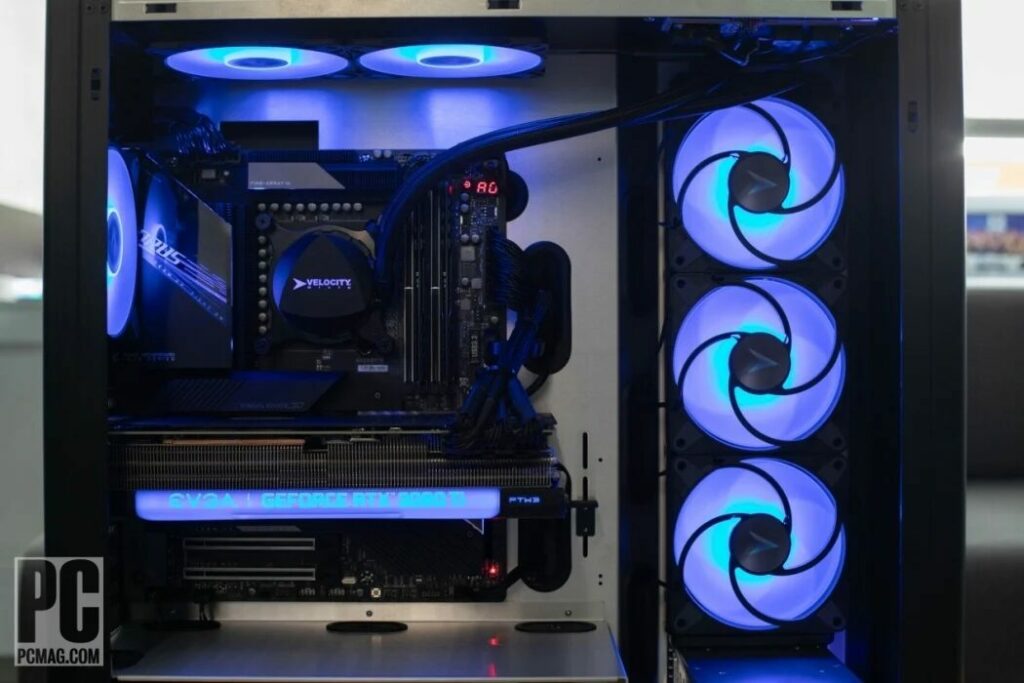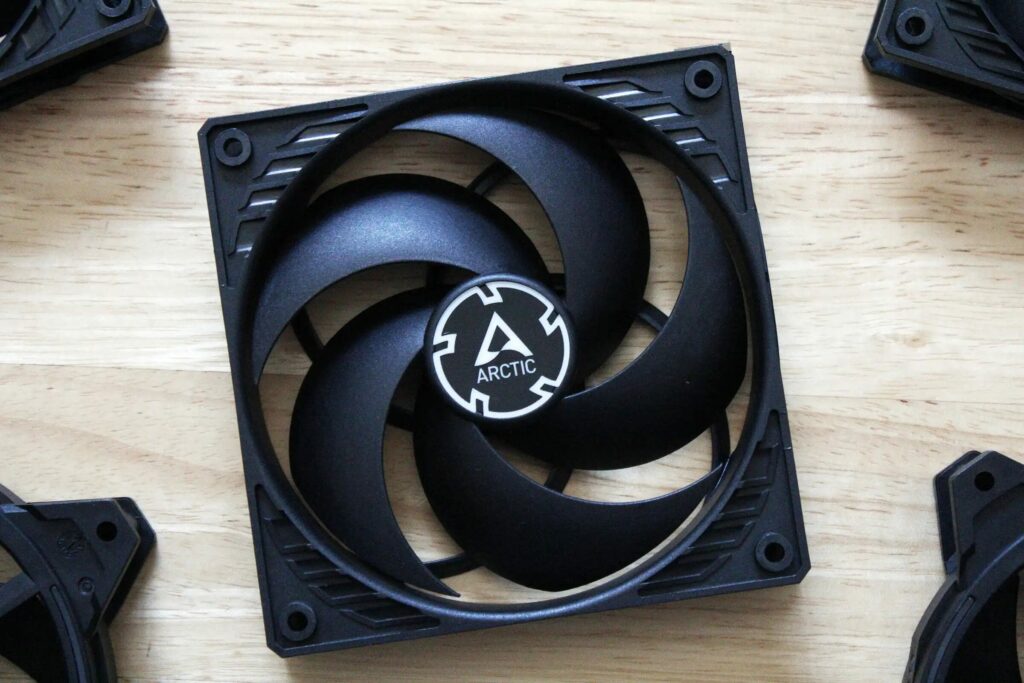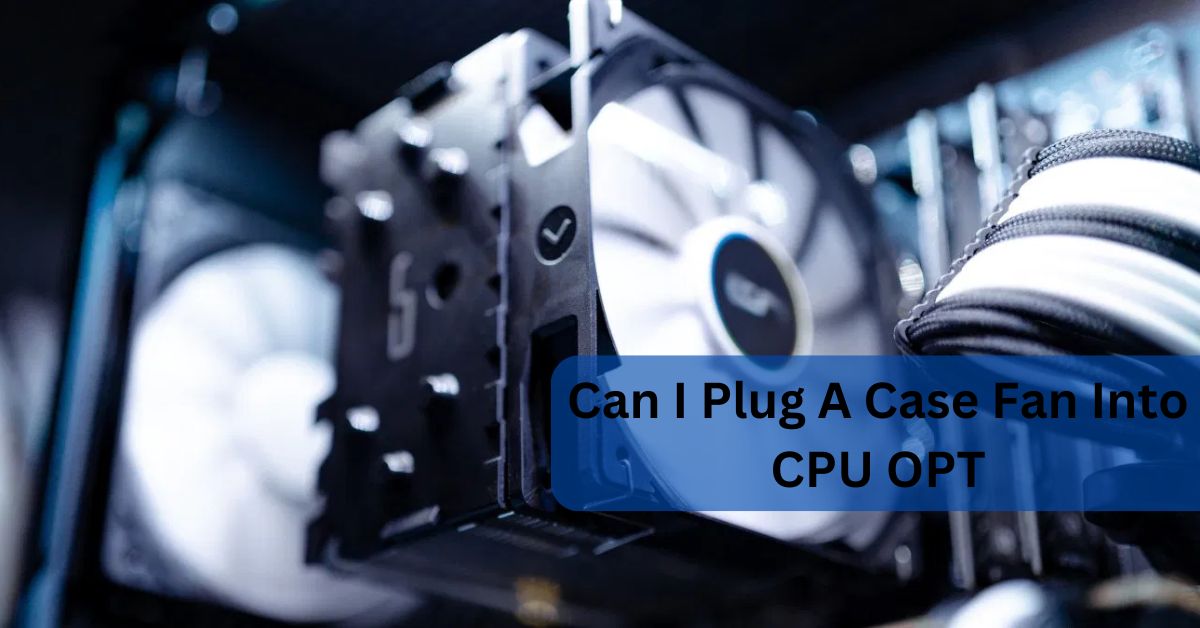Can I Plug A Case Fan Into CPU OPT – A Comprehensive Guide in 2024!
When setting up or upgrading your computer, managing your system’s cooling is crucial. One common question that arises is whether you can plug a case fan into the CPU_OPT (CPU Optional) header on your motherboard.
“Can I Plug A Case Fan Into CPU OPT? Yes of course, you can plug a case fan into the CPU_OPT header if it is a 4-pin header and your motherboard can control fan speeds through BIOS or software. This allows for better cooling and fan control“
This article will explore the purpose of the CPU OPT header, its compatibility with case fans, and how to make the most of it for your system’s cooling needs.
Can I Plug A Case Fan Into CPU OPT?
Yes, you can plug a case fan into the CPU_OPT connector, but it could be better. CPU_OPT is meant for a second CPU cooler. Use the main CPU_FAN connector for your CPU cooler and CPU_OPT for another fan for best results.
Is my CPU cooler enough for my CPU?
To check if your CPU cooler is enough, compare its cooling capacity with your CPU’s heat requirements. If the cooler matches or exceeds what your CPU needs, it should work well. Make sure it’s properly installed and functioning.
Read more: Can CPU Overheating Cause Games To Crash – A Comprehensive Guide in 2024!
Can I use the CPU to opt for a case fan?

Yes, you can use the CPU OPT connector for a case fan, but it’s meant for a second CPU cooler. For the best cooling, use the CPU_FAN connector for your CPU cooler and CPU_OPT for an additional case fan if needed.
Is CPU OPT Safe for Case Fan Power?
Yes, using the CPU_OPT connector for a case fan is safe. It’s designed for a second CPU cooler but can power a case fan. Just ensure the fan’s power needs match what the connector can supply.
Read more: What Does H Mean In Intel CPU – A Comprehensive Guide in 2024!
CPU OPT vs CPU fan!
CPU FAN:
This connector is for your main CPU cooler. It controls the speed of the CPU fan and is crucial for keeping your CPU at the right temperature.
CPU OPT:
This connector is for an additional CPU cooler or extra fan. It usually helps with extra cooling but is not as critical as CPU_FAN for primary cooling.
Read more: How Many Cores In A CPU – Ultimate Guide In 2024!
Risks of Connecting a Case Fan to CPU OPT
- Inaccurate Temperature Control: CPU_OPT might not provide accurate temperature readings, affecting fan speed and cooling efficiency.
- Potential Overheating: If the case fan is not properly managed, it could lead to overheating of the CPU or other components.
- Reduced Cooling Performance: CPU_OPT is designed for additional CPU cooling, not case fans, which might result in suboptimal cooling performance.
- Limited Fan Control: CPU_OPT may not offer the same level of fan speed control as the CPU_FAN connector, impacting cooling effectiveness.
- Compatibility Issues: Not all case fans are compatible with the CPU_OPT connector, leading to potential connection or functionality issues.
- Increased Noise: Improper use of CPU_OPT might cause the case fan to run at inconsistent speeds, leading to increased noise levels.
- Power Supply Concerns: CPU_OPT might not supply adequate power for high-performance case fans, affecting their operation.
- Warranty Implications: Using CPU_OPT for purposes other than intended might void warranties for both the motherboard and the fan.
Alternative Power Sources for Case Fan!

SYS_FAN:
This connector is for case fans and controls their speed to help cool the overall system. It is often used for additional cooling within the computer case.
PWR_FAN:
This connector is usually for fans that cool the power supply unit (PSU). It helps ensure the PSU stays cool and operates efficiently.
Fan Controller:
A separate device that allows you to manage the speed of your case fans manually or automatically, depending on the temperature.
Molex Adapter:
An adapter that lets you connect a case fan directly to the power supply unit (PSU) using a Molex connector. It provides power to the fan without needing a motherboard connector.
Read more: Is 70 GPU Temp Bad – Complete Guide – 2024!
What if the Case Fan Isn’t Working with CPU OPT?
Connect to SYS_FAN:
Plug the case fan into the SYS_FAN header on the motherboard, which is designed for case fans and may work better.
Check Fan Connection:
Ensure the fan is securely connected to the header. A loose connection can prevent it from working.
Verify Power Needs:
Some fans need more power or different connections. Check if the fan requires a Molex adapter or other power source.
Adjust BIOS Settings:
Enter the BIOS and check fan control settings. You may need to configure the fan speed or enable it for the correct header.
Test the Fan on Another System:
Try the fan on a different computer to see if it works there. This helps determine if the issue is with the fan or your system.
Inspect for Physical Damage:
Check the fan and connector for any visible damage or wear. Damaged components may need repair or replacement.
Update BIOS:
Ensure your motherboard’s BIOS is up-to-date. Sometimes, BIOS updates fix compatibility issues with fan headers.
Use a Fan Controller:
Install a separate fan controller to manage the fan speed and power. This can bypass motherboard issues and offer better control.
Best Practices for Case Fan Powering!

- Connect to SYS_FAN or PWR_FAN: Use these headers for optimal performance and control.
- Proper Installation: Ensure the fan is securely connected to avoid loose connections.
- Check BIOS Settings: Adjust fan speed and control settings in the BIOS.
- Consider a Fan Controller: Use a separate controller for advanced fan management.
- Inspect for Damage: Regularly check the fan and connections for any wear or damage.
Troubleshooting Case Fan Issues with CPU OPT!
If your case fan isn’t working with CPU_OPT, try connecting it to a different fan header like SYS_FAN. Check the fan’s connection and ensure it’s not damaged. Also, verify BIOS settings for proper fan control.
Read more: Is CPU A Storage Device – A Complete Guide in 2024!
How to Properly Power a Case Fan?
To power a case fan properly, connect it to the SYS_FAN or PWR_FAN header on the motherboard. Make sure it’s securely plugged in and check BIOS settings to adjust fan speed if needed.
Understanding CPU OPT and Case Fan Power Requirements!
CPU_OPT:
This connector is intended for an additional CPU cooler. It helps manage cooling for the CPU but is not ideal for regular case fans.
SYS_FAN:
This header is designed for case fans, providing power and control to help cool the entire system.
PWR_FAN:
This connector is typically used for fans that cool the power supply unit (PSU), ensuring it remains cool during operation.
Read more: Is CPU Hardware or Software – Ultimate Guide – 2024!
CPU OPT vs. Chassis Fan Headers: Key Differences!
- Purpose: CPU_OPT is for an additional CPU cooler, while chassis fan headers like SYS_FAN are for case fans.
- Cooling Focus: CPU_OPT focuses on CPU cooling, whereas chassis fan headers support overall case airflow.
- Control: SYS_FAN often offers better control for case fans, including speed adjustments, compared to CPU_OPT.
- Connection: Chassis fan headers are designed to power and manage regular case fans, while CPU_OPT may not provide optimal power for them.
Case Fan Powering Options!

SYS_FAN Header
Connect your case fan to the SYS_FAN header on the motherboard for reliable power and control. It helps manage cooling for the entire system.
PWR_FAN Header
Use the PWR_FAN header to power a fan dedicated to cooling the power supply unit (PSU). This header ensures proper PSU cooling.
Fan Controller
Install a fan controller to manage multiple fans and adjust speeds manually or automatically. This option provides advanced fan management.
Molex Adapter
Connect a case fan directly to the power supply unit (PSU) using a Molex adapter. This method supplies power without using motherboard headers.
Read more: Is 100°C Too Hot for CPU – Complete Guide – 2024!
Can I plug the case fan into the AIO pump?
You can plug a case fan into the AIO pump header, but it’s not ideal. The AIO pump header is designed for liquid cooler pumps, not case fans. For best results, use SYS_FAN or PWR_FAN headers for case fans.
Can I plug a CPU cooling unit into the CPU Opt if it is the only fan?
Yes, you can plug a CPU cooling unit into the CPU_OPT if it’s the only fan, but it’s best to use the CPU_FAN header for the main cooler. CPU_OPT is usually for a second cooler or additional fan.
How can I improve the performance of my CPU’s cooling system?
To improve your CPU’s cooling system, ensure the cooler is properly installed and clean. Use high-quality thermal paste, add more case fans for better airflow, and keep the system dust-free. Ensure all fans are working correctly.
What’s the difference between a “CPU FAN” socket, a “CPU OPT” socket, and a “SYS FAN” socket on the motherboard?

CPU FAN Socket:
This socket is for the primary CPU cooler. It controls the fan speed based on the CPU temperature to keep the processor cool and prevent overheating.
CPU OPT Socket:
This socket is for an additional CPU cooler or fan. It’s often used to support a second cooler or fan for extra cooling, but it’s not as crucial as the CPU FAN socket.
SYS FAN Socket:
This socket is for case fans that help with overall system cooling. It provides power and control to fans that manage airflow within the computer case, improving cooling for all components.
FAQS:
Can I put a case fan in a CPU opt?
Yes, you can put a case fan in the CPU_OPT socket, but it’s designed for a second CPU cooler. For optimal cooling, use the SYS_FAN header for case fans.
Can I connect the fan hub to CPU opt?
Yes, you can connect a fan hub to the CPU_OPT socket, but it’s designed for a second CPU cooler. For better results, use the SYS_FAN header for fan hubs.
Can I use a case fan on my CPU cooler?
Yes, you can use a case fan on your CPU cooler if it fits properly. However, it’s usually better to use a dedicated CPU cooler for optimal performance.
What plugs into a CPU opt?
The CPU_OPT socket is typically used for an additional CPU cooler or fan. It helps provide extra cooling but is secondary to the main CPU_FAN socket.
Can I plug a case fan into a CPU_FAN?
Yes, you can plug a case fan into the CPU_FAN socket, but it’s primarily meant for the CPU cooler. For best results, use it for the CPU cooler and connect case fans to SYS_FAN.
Can I replace my CPU fan with a case fan?
Yes, you can replace a CPU fan with a case fan if it fits and is compatible. However, a dedicated CPU cooler is usually better for managing CPU temperatures.
Will case fans cool my CPU?
Case fans can help lower overall system temperature and improve airflow, but they are not as effective as a dedicated CPU cooler for directly cooling the CPU. For best results, use a proper CPU cooler.
Conclusion:
In conclusion:
The CPU_OPT header can be used for case fans, but it’s better suited for an additional CPU cooler. For optimal cooling, use the CPU_FAN header for the main cooler and SYS_FAN for case fans. Properly managing fan connections and settings helps ensure effective cooling for your system







